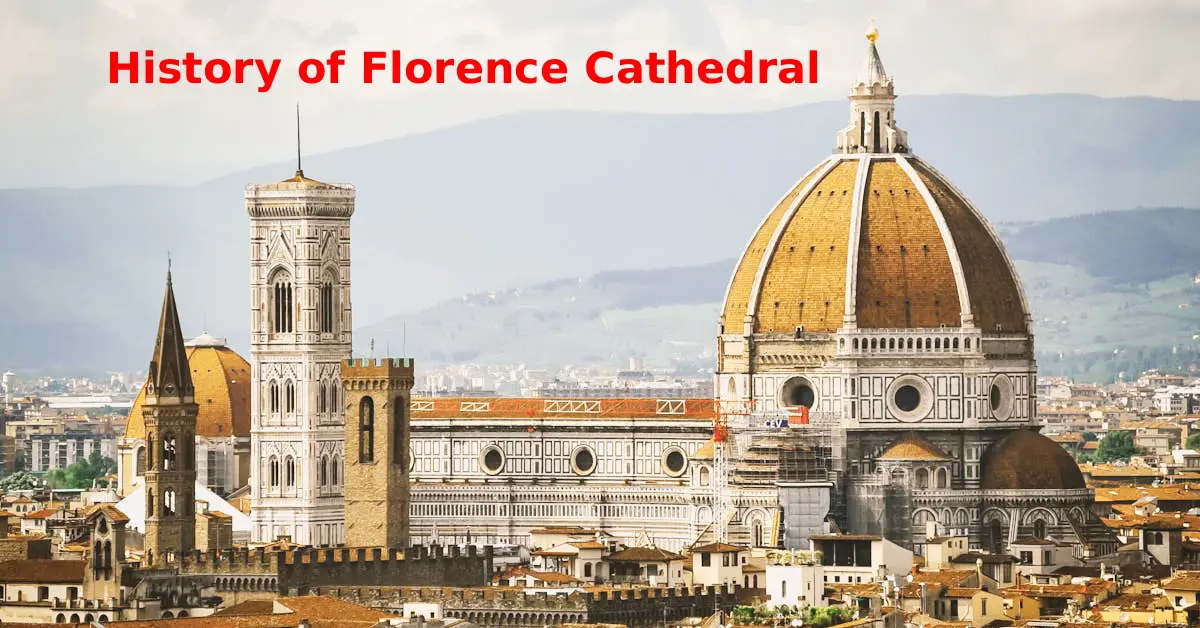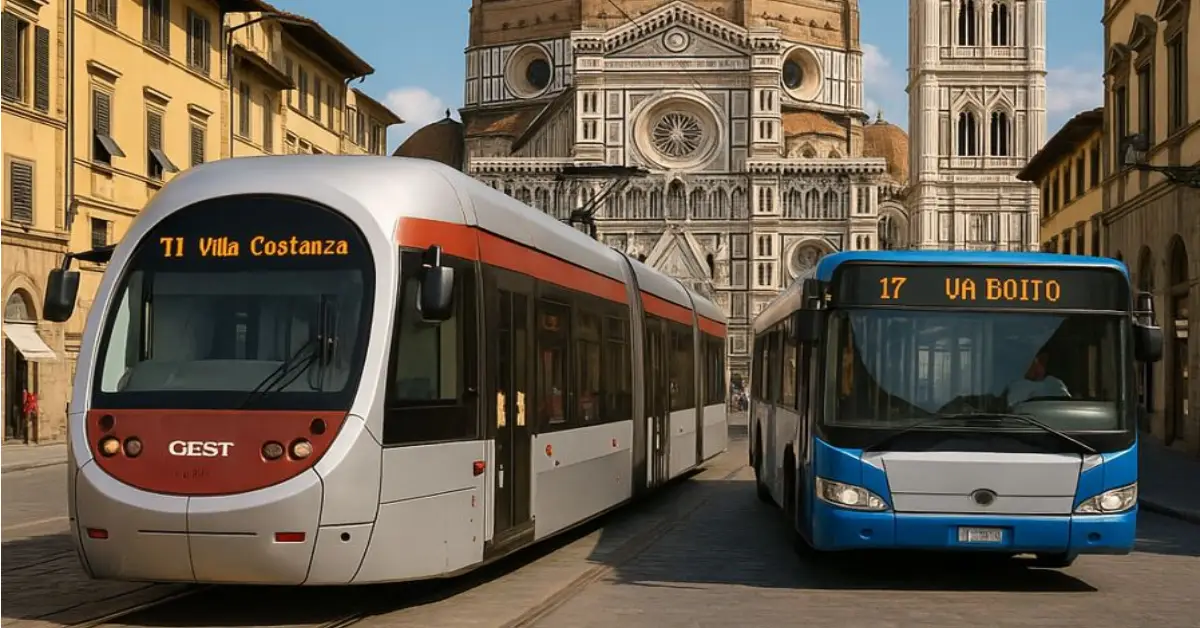The Florence Cathedral (Santa Maria del Fiore), known as the Duomo di Firenze, stands as a masterpiece of Gothic and Renaissance architecture and the enduring symbol of Florence’s civic pride and religious devotion. Built atop the earlier church of Santa Reparata, its construction began in 1296 under Arnolfo di Cambio and continued for centuries, passing through the hands of figures like Giotto, Francesco Talenti, and ultimately Filippo Brunelleschi, whose revolutionary dome completed in 1436 became one of the greatest engineering feats of its time.
The Cathedral’s long evolution—from Gothic foundations to Brunelleschi’s Dome and finally the Neo-Gothic façade by Emilio De Fabris in the 19th century—reflects Florence’s artistic and political transformation across eras. Inside, works by masters such as Donatello, Ghiberti, and Luca della Robbia adorned the cathedral with sculpture and stained glass, while Vasari and Zuccari filled the dome’s interior with The Last Judgment, elevating it as both a spiritual guide and a cultural landmark.
Today, the Duomo anchors Piazza del Duomo, alongside Giotto’s Campanile and the Baptistery of San Giovanni, forming part of Florence’s UNESCO World Heritage site. Visitors enter the nave freely, but special tickets grant access to the dome, bell tower, crypt, and museum, often accompanied by guided tours that bring the cathedral’s layered history to life. Both a living place of worship and a global monument, the Florence Cathedral unites medieval ambition, Renaissance genius, and modern preservation, continuing to inspire millions each year.
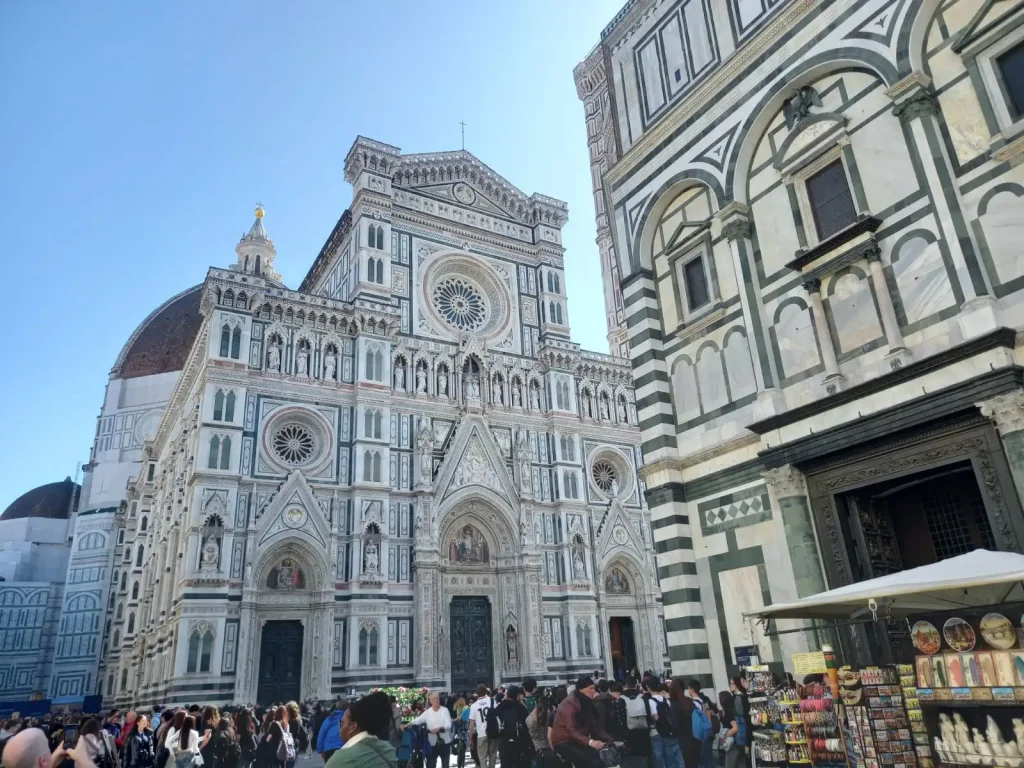
Who laid the foundation of Florence Cathedral?
The foundation of Florence Cathedral was laid on 8 September 1296 under the direction of Arnolfo di Cambio, Florence’s leading architect of the Gothic era. Commissioned by the Arte della Lana guild, Arnolfo’s design reflected Florence’s desire to outshine rival Tuscan cities.
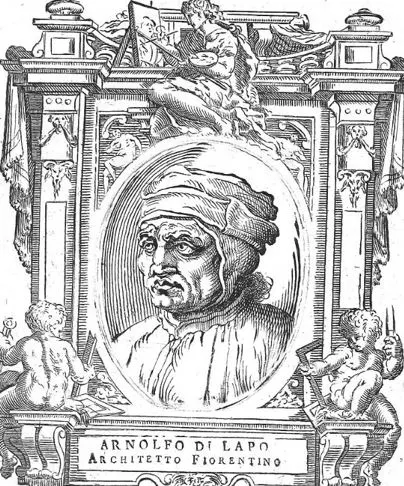
Arnolfo di Cambio’s plan envisioned a massive basilica with a Latin cross floor plan, three wide aisles, and space to host up to 30,000 worshippers—a scale unmatched in Europe at the time.
How did Florence Cathedral’s construction progress over time?
Florence Cathedral was built in 4 phases outlines below.
1. Arnolfo di Cambio Phase (1296–1310)
Arnolfo laid the foundation and designed the cathedral’s original Gothic plan with a vast nave and Latin cross layout. He completed parts of the apse and lower nave before his death slowed progress.
2. Giotto and Successors Phase (1330s–1350s)
Giotto, more famous as a painter, became master in 1334 and focused on the bell tower (Campanile). After his death, Andrea Pisano continued the work until the Black Death of 1348 halted construction.
3. Francesco Talenti Expansion Phase (1350s–1370s)
Talenti enlarged Arnolfo’s original design, extended the nave, and completed the upper levels of Giotto’s bell tower. By the 1370s, the cathedral’s body was essentially finished—except for the dome.
4. Brunelleschi’s Dome Phase (1418–1436)
After a competition in 1418, Filippo Brunelleschi designed and built the revolutionary dome using a double-shell structure, herringbone brick pattern, and hidden stone chains. The dome was completed in 1436, when Pope Eugene IV consecrated the cathedral.
Why is Brunelleschi’s Dome considered a technical marvel?
Brunelleschi’s Dome is considered a technical marvel because it’s a largest masonry dome ever built, weighing over 40,000 tons. Brunelleschi avoided collapse by:
-
- Designing an inner and outer shell for reduced weight.
-
- Using a herringbone brick pattern to redirect forces.
-
- Embedding iron and oak tension rings to counteract outward thrust.
- Innovating hoisting machinery powered by oxen to raise heavy materials.
When was the Florence Cathedral’s facade completed?
The façade of Florence Cathedral was completed between 1876 and 1887 by Emilio De Fabris. Despite its imposing body, the cathedral lacked a true façade for centuries. The medieval front was dismantled in the late 16th century under the Medici. Only in the 19th century was the current Neo-Gothic façade completed by Emilio De Fabris (1876–1887). Its green, white, and red marble harmonizes with the Baptistery of San Giovanni and Giotto’s Campanile, unifying the Piazza del Duomo.
What is the Florence Cathedral's cultural and architectural significance?
Florence Cathedral embodies more than religious devotion—it is Florence’s urban identity. At its consecration in 1436, it was the largest church in the world, symbolizing Florence’s power in trade, politics, and culture. The Duomo’s layered construction tells a story of evolving styles: Gothic planning, Renaissance innovation, and 19th-century revivalism.
Its role as the heart of Florence was recognized globally when, in 1982, UNESCO inscribed the cathedral, Baptistery, and Campanile as part of the Historic Centre of Florence World Heritage Site. Today, the Duomo remains a living monument—both a place of worship and a global architectural icon.
How did the Cathedral influence Renaissance Art?
The Florence Cathedral became a canvas for Renaissance masters. Donatello, Ghiberti, and Luca della Robbia crafted sculptures and reliefs for its exterior. Its stained glass windows, designed by artists such as Uccello and Ghiberti, bathed the nave in vivid biblical light, merging theology with artistry.
What role does the Cathedral play in modern Florence?
Today, Santa Maria del Fiore remains both a place of worship and a global landmark. Visitors climb Brunelleschi’s Dome for panoramic views, explore Santa Reparata’s crypt, and witness mass under the frescoed vaults. The cathedral continues to unify history, art, and living faith in one enduring monument.
Are there any historical figures associated with the Florence Duomo?
Yes, there are famous historical figures associated with Florence Duomo. Arnolfo di Cambio designed the first Gothic plan in 1296, while Giotto di Bondone oversaw early works and began the bell tower. Later, Francesco Talenti expanded the nave and refined the Gothic body of the cathedral. The most celebrated figure is Filippo Brunelleschi, who engineered the massive dome between 1420 and 1436, revolutionizing architecture. Artists such as Giorgio Vasari and Federico Zuccari later enriched its interior with frescoes, linking the Duomo directly to both Gothic origins and Renaissance creativity.
Who designed the dome of the Florence Cathedral?
The Florence Cathedral was designed by Filippo Brunelleschi. Built with over four million bricks and stabilized with hidden stone chains and herringbone brickwork, the dome rose without wooden centering, a feat never attempted before. Brunelleschi’s Dome not only crowned the cathedral but also became a defining symbol of Renaissance Florence, inspiring architects throughout Europe.
Where is Duomo Florence located?
The Florence Duomo is located in the Piazza del Duomo in Florence, Italy, within the city’s historic center. This monumental square also houses Giotto’s Campanile and the Baptistery of San Giovanni, forming a sacred and civic hub that reflects Florence’s identity. Since 1982, the cathedral and its surrounding monuments have been recognized as part of the UNESCO World Heritage Site of Historic Florence, reinforcing their global cultural value.
Do I need to book a ticket to visit Duomo?
Entry to the main cathedral is free, allowing worshippers and tourists alike to step inside its vast nave. However, tickets are necessary to access key attractions such as Brunelleschi’s Dome climb, Giotto’s Bell Tower, the Crypt of Santa Reparata, and the Opera del Duomo Museum. Because of high demand, especially for the dome climb, booking duomo tickets in advance is strongly recommended.
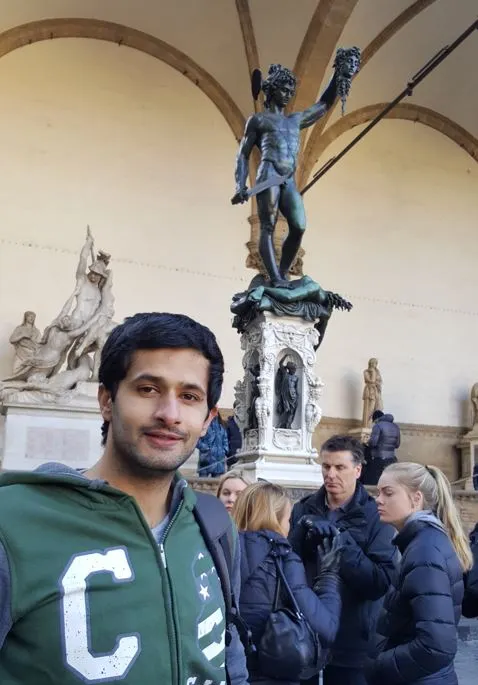
Mosaab is a seasoned content writer and SEO expert with a passion for travel, culture, and global cuisine. Drawing from his experience as a courier in Florence, he offers unique insights into the city’s hidden gems and rich history.

